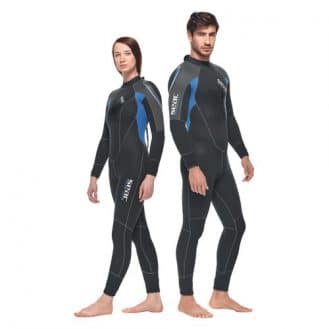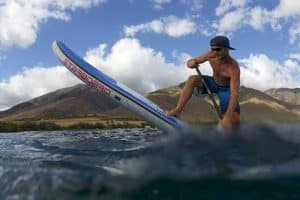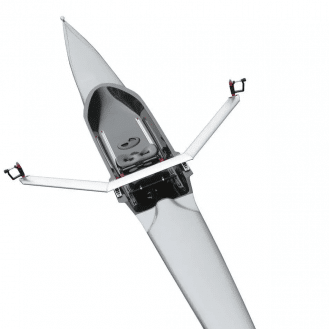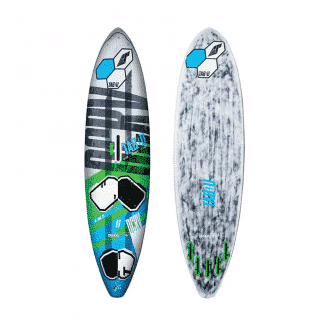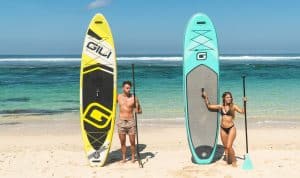
Gili stand-up paddle-board
The size of the paddle-board is determined by its length, width and thickness. In general, longer boards are faster than shorter boards, but shorter boards are more maneuverable. For children, short boards are ideal.
Medium boards (10’-12’ / 3-3.6m) are ideal for all-around use and SUP yoga. Most of these boards have a planer hull. Longer boards (12.6’ / 3.8m and longer) are ideal for fast paddling and long-distance tours. Most boards like this have displacement hulls. These boards are generally faster than shorter boards because they tend to track better.
When choosing a length, it is helpful to understand how it relates to volume and weight capacity. If you are interested in paddling for tours or long distances, you will want a longer board. A longer and wider board means more volume and weight capacity.
- Short boards under 10’ (3m) are good for children.
- Medium boards (10’ to 12’ / 3-3.6m) are ideal for all-around use and for SUP yoga. Most of these boards have planing hulls.
- Long boards (12.6’ / 3.8m and longer) are great for fast paddling and long-distance touring. The majority are displacement-hull SUPs. They’re faster than short and medium boards and they tend to track straighter. They provide more comfort when rowing, especially when launching into the waves, and allow a more fluid and comfortable glide.
Width is also an important factor that influences how manageable a board is. SUPs are manufactured with widths from 30 inches / 76cm to 35 inches /89cm to meet a variety of needs.
If you need to take extra equipment, coolers, food or tents on a long trip, choose a wider board to have more storage space. Wide boards are more stable than thin boards, but remember that they are slower, and if they are too wide, it will be more difficult for you to paddle. Narrow boards, on the other hand, are faster and more manoeuvrable, making them a choice for racers and surfers.
- A wider board will always be more stable than a narrow one
- Wide boards can be slower and, if the board is too wide for the user, it can be difficult to paddle.
The main reason to consider the thickness of a standing paddle-board is that it affects the overall volume, weight and capacity. If you look at two boards of the same length and width but varying thickness, the thicker board has more volume than the thinner board and the higher the volume the more weight it will carry.
- A thicker board is bulkier and heavier, but will float better and therefore be higher in the water. It can be reassuring for beginners (or for yoga, touring, etc.) on calm water.
- A thin board is lighter, less bulky, and inflates faster if it is an inflatable model. It is more maneuverable.
